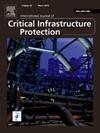保障核供应链:解决假冒问题
IF 5.3
3区 工程技术
Q1 COMPUTER SCIENCE, INFORMATION SYSTEMS
International Journal of Critical Infrastructure Protection
Pub Date : 2025-05-16
DOI:10.1016/j.ijcip.2025.100767
引用次数: 0
摘要
2024年,黎巴嫩的寻呼机和对讲机爆炸,极大地突出了供应链安全的重要性以及假冒产品可能带来的风险。本文试图在核背景下探讨这些问题。根据新的实证研究,报告审查了假冒材料、物品和技术如何进入核供应链并最终进入核设施,探讨了这种情况的影响以及国际社会如何作出反应。报告发现,尽管仿冒品能够而且确实已经造成了重大的核风险,但从历史上看,这个问题受到的关注相对较少。在这方面,普遍缺乏认识,过于狭隘地关注它们对关键安全系统的影响,以及缺乏全面的报告机制意味着,渗透到全球核设施的已知假冒产品的数量可能被严重低估。尽管近年来在这一领域开展了旨在确保核供应链安全的新的国际努力,但仍有许多工作要做,不同国家和组织在这一问题上的成熟程度存在很大差异。本文章由计算机程序翻译,如有差异,请以英文原文为准。
Securing the nuclear supply chain: Addressing the issue of counterfeiting
In 2024, exploding pagers and walkie-talkies in Lebanon dramatically highlighted the importance of supply chain security and the risk that counterfeiting can pose. This article seeks to explore these issues in the nuclear context. Drawing on new empirical research, it examines how counterfeited materials, items, and technologies have found their way into nuclear supply chains and ultimately to facilities, exploring the impact of this and how the international community has responded. It finds that although counterfeits can and indeed have created significant nuclear risks, historically this issue has received relatively little attention. Here, a general lack of awareness, an overly narrow focus on their impact on critical safety systems, and the absence of comprehensive reporting mechanisms mean that the number of known counterfeits that have penetrated nuclear facilities globally is likely to be significantly underestimated. Although new international efforts in this area aimed at securing the nuclear supply chain have been launched in recent years, there remains much to be done, with considerable variation in the maturity of different countries and organizations’ approaches to this issue.
求助全文
通过发布文献求助,成功后即可免费获取论文全文。
去求助
来源期刊

International Journal of Critical Infrastructure Protection
COMPUTER SCIENCE, INFORMATION SYSTEMS-ENGINEERING, MULTIDISCIPLINARY
CiteScore
8.90
自引率
5.60%
发文量
46
审稿时长
>12 weeks
期刊介绍:
The International Journal of Critical Infrastructure Protection (IJCIP) was launched in 2008, with the primary aim of publishing scholarly papers of the highest quality in all areas of critical infrastructure protection. Of particular interest are articles that weave science, technology, law and policy to craft sophisticated yet practical solutions for securing assets in the various critical infrastructure sectors. These critical infrastructure sectors include: information technology, telecommunications, energy, banking and finance, transportation systems, chemicals, critical manufacturing, agriculture and food, defense industrial base, public health and health care, national monuments and icons, drinking water and water treatment systems, commercial facilities, dams, emergency services, nuclear reactors, materials and waste, postal and shipping, and government facilities. Protecting and ensuring the continuity of operation of critical infrastructure assets are vital to national security, public health and safety, economic vitality, and societal wellbeing.
The scope of the journal includes, but is not limited to:
1. Analysis of security challenges that are unique or common to the various infrastructure sectors.
2. Identification of core security principles and techniques that can be applied to critical infrastructure protection.
3. Elucidation of the dependencies and interdependencies existing between infrastructure sectors and techniques for mitigating the devastating effects of cascading failures.
4. Creation of sophisticated, yet practical, solutions, for critical infrastructure protection that involve mathematical, scientific and engineering techniques, economic and social science methods, and/or legal and public policy constructs.
 求助内容:
求助内容: 应助结果提醒方式:
应助结果提醒方式:


